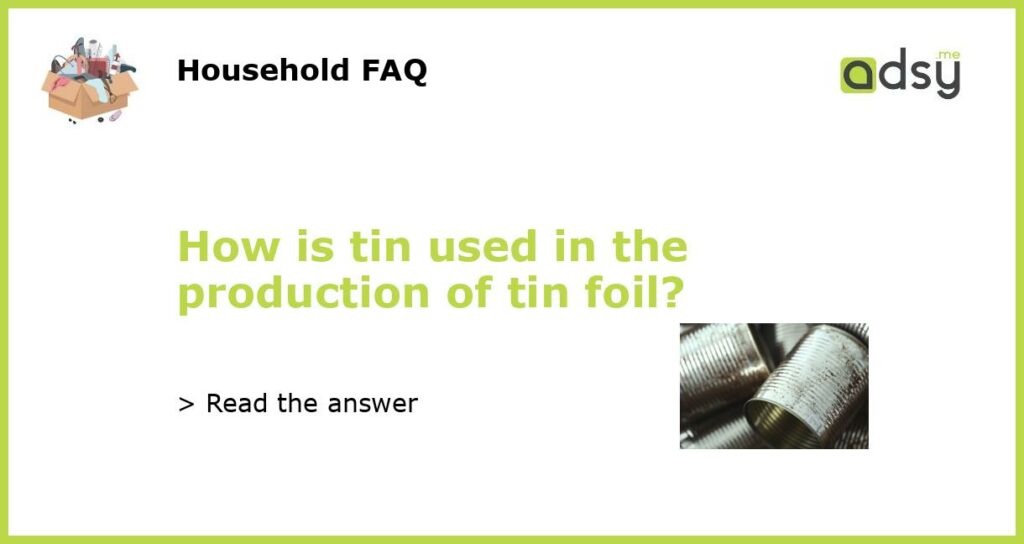What is Tin Foil?
Tin foil, also known as aluminum foil, is a thin sheet of metal that is commonly used for packaging, cooking, and insulation purposes. It is made from aluminum, which is a lightweight, malleable, and corrosion-resistant metal. However, despite its name, tin foil does not actually contain tin. Instead, it is called tin foil due to its resemblance to the earlier use of tin for packaging and wrapping purposes.
The Role of Tin in Tin Foil Production
While tin foil does not contain actual tin, tin does play a critical role in its production process. Tin is used as a coating material on the surface of aluminum foil to enhance its performance and ensure its usability for various applications.
Tin Coating Process
The process of coating aluminum foil with tin is known as tinning. This process involves applying a layer of molten tin onto the surface of the aluminum foil. The foil is typically passed through a bath of molten tin, where it undergoes a series of chemical reactions that bond the tin to the aluminum surface. The tin coating thickness can vary depending on the desired application and performance requirements.
Benefits of Tin Coating
The tin coating on aluminum foil provides several benefits, including:
- Improved barrier properties: The tin coating helps to create a barrier against moisture, oxygen, and other contaminants, which helps to preserve the quality and freshness of the packaged products. This is particularly important for food packaging applications where maintaining the integrity of the contents is crucial.
- Enhanced ductility: Tin improves the flexibility and ductility of aluminum foil, making it easier to handle, fold, and wrap. This is especially important for household uses such as wrapping food or covering dishes.
- Increase in heat resistance: The tin coating enhances the heat resistance of aluminum foil, allowing it to withstand high temperatures without melting or deforming. This makes it suitable for use in cooking, baking, and grilling applications.
- Better appearance: The tin coating provides a smooth and shiny surface to aluminum foil, enhancing its visual appeal and making it more aesthetically pleasing. This is advantageous for both packaging and decorative purposes.
Other Uses of Tin in the Packaging Industry
Tin, or tin alloys, are widely used in the packaging industry apart from its utilization in tin foil production. Some of these applications include:
- Tin cans: Tin-plated steel or aluminum cans are commonly used for packaging food, beverages, and other products. The tin coating prevents corrosion and extends the shelf life of the packaged goods.
- Tin containers: Tin containers are popular for storing and packaging items like tea, cookies, and other dry commodities. They provide an airtight seal and offer better protection against external factors.
- Tin liners: Tin liners are used to coat the interior of metal cans to prevent the contents from coming into contact with the metal surface, which could lead to contamination or interaction between the product and the container material.






